Feeling confident about your smile is essential for everyday life. From expressing happiness to exuding a positive attitude during a job interview, your smile is often the first feature others notice. A high percentage of people are embarrassed by their smile due to having tooth gaps, chips, shape imperfections, discoloration, decay, and unsightly metal restorations. Metal is not as aesthetically pleasing as porcelain and can lead to gum recession over time. Dr. Tomazin offers porcelain crowns to patients desiring a beautiful, corrected smile. These restorations are strong, match the natural shade of your teeth, and last much longer than typical mercury crowns.
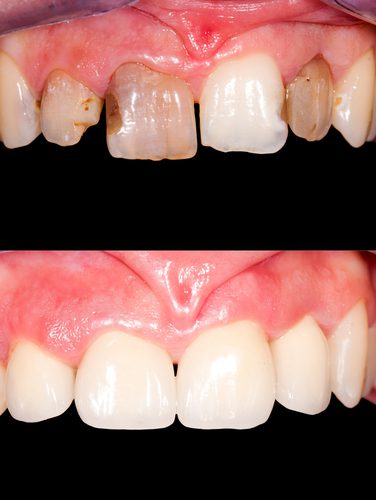
Traditional Crown Application
Traditional crown procedures involve numbing the area around the tooth. Once the anesthetic takes effect, areas of decay, cracks and deteriorating tooth structure are removed. The tooth is then modified and prepared for a crown restoration. Next, an impression of your tooth is made using a material that requires approximately five minutes to set while in your mouth. The tooth is then covered with a temporary crown that serves to protect the tooth until the final crown is created by the dental lab. While temporary crowns are provided as protection for the tooth, these temporary crowns may fall off or break during inopportune moments, leading to sensitivity or discomfort, and another dentist visit is necessary to reattach the temporary. Once the final restoration is completed, you return to the dentist’s office and receive another injection for the cementation of your permanent crown.
CEREC® Crown Application
Your smile can be rejuvenated by correcting dental imperfections with a CEREC® crown or, in some cases, multiple crowns. This procedure is ideal for patients seeking to restore a healthy, dazzling smile in one visit. In addition to having many color options available to match your natural shade, Dr. Tomazin also offers same-day crowns with CEREC®, the latest in dental technology, which allows dentists to create and place custom-designed crowns in a more timely and efficient way. Dental crowns are designed in-office and then gently fitted around the entire tooth on the same day. Through this process, the tooth is reinforced and protected from further damage or decay, and there is no need to wear a temporary crown while the final crown is being created.
The CEREC® Process
Typical CEREC® procedures involve receiving a numbing injection, and the tooth is prepared similarly to the traditional method. A digital 3D image is taken of your tooth rather than a messy, uncomfortable molded impression. The digital impression is transferred to a computer, and Dr. Tomazin utilizes a computer-aided design (CAD) program to design your custom tooth restoration. Upon completion of the design, the milling unit creates your porcelain crown in 15 to 20 minutes. The new crown is then bonded to the prepared tooth, and the process is complete. This method also removes the discomfort of temporaries, potential re-cementing, or additional numbing injections.
Classic Porcelain Crowns or Modern CEREC® Crowns?
As technological advancements are made in the dental field, patients are beginning to gravitate towards Chairside Economical Restoration of Esthetic Ceramics (CEREC®) procedures for same-day crowns to resolve dental issues such as gaps in teeth, discoloration, cracks, and other damages quickly and efficiently. CEREC® technology is rapidly gaining popularity, as the results are natural looking and long lasting. While patients seeking a stronger material than ceramic can still choose traditional porcelain crowns and veneers, it is a good idea to educate yourself on your options to decide which process will be better for your ideal smile.

What Is the Difference?
Your smile is unique and can dramatically change your appearance. While traditional crowns are still a viable option for many patients, if you are seeking a solution that will closely match your natural teeth, then same-day crowns may be your best option.
Traditional Crowns
Traditional crowns are created by taking a mold of the teeth, which is then sent to a lab for processing. Creation of your crown can take up to three weeks to complete, so a temporary crown is used in the meantime. The new crown can be made from different materials, such as porcelain, ceramic, resin-composite and zirconia.
Same-day Crowns
CEREC® crowns utilize advanced dental and computer technology to take a digital impression of teeth, rather than the messy, uncomfortable mold, within a matter of minutes. Digital images are sent to the computer-aided design/computer-aided manufacturing (CAD/CAM), and the milling unit creates your new crown using ceramic and ceramic-reinforced materials. The entire process takes approximately two hours total, and a follow-up visit is usually not required. If you are seeking a convenient procedure that will not require more than one appointment in most cases, this may be the best option for your dental needs.
CEREC® Benefits
Patients seeking an expedient dental experience and natural and immediate results without an awkward temporary crown often select same-day crowns, as they are completed rapidly and accurately. An added benefit of the CEREC® technique includes being able to avoid additional numbing injections, as these are only required during your initial visit, except in cases where adjustments to your bite are required.
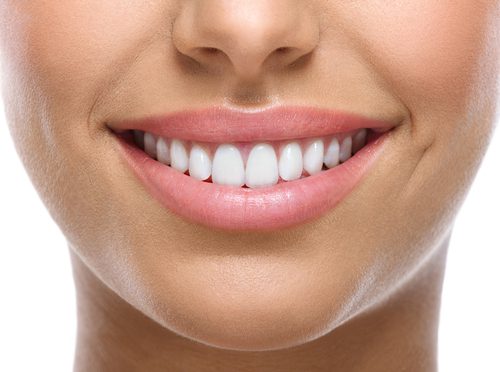
Love Your Smile
Having a bright smile that you can be proud to show off is an excellent confidence booster, and can positively affect your daily life. Regardless of the process you select, our team is dedicated to providing the most current options available to help you achieve your dental goals.
To learn more regarding porcelain crowns and how technology has advanced through the CEREC® method, please contact our office by calling (951) 686-3666 to schedule a consultation today!
One of the most significant concerns people have about their teeth is how their smile looks. Over time, teeth can become discolored or damaged. Many patients also experience tooth loss as a result of decay or dental trauma. Fortunately, you can enhance the appearance and functionality of your teeth with a customized smile makeover. Dr. Chad Tomazin performs various smile makeover treatments and procedures that can revitalize your smile and boost your self-confidence.

What Are My Smile Makeover Options?
Every patient has different needs, so developing a personalized treatment plan that addresses your specific condition can ensure you achieve optimal results. Depending on your cosmetic and functional desires, you can choose from the following smile makeover procedures:
- Porcelain Veneers: These long-lasting restorations are permanently attached to the teeth to improve their appearance. Porcelain veneers are appropriate for patients who have misaligned, broken, or stained teeth.
- Teeth Whitening: Patients who struggle with discolored or stained teeth can benefit from teeth whitening services. Dr. Tomazin offers several options to brighten your teeth, including both at-home whitening and in-office whitening procedures.
- Dental Bonding: This approach is ideal for those who have minor cosmetic imperfections, such as chipped, cracked, or gapped teeth. Dental bonding corrects these concerns and restores the teeth to a more attractive condition.
- Dental Implants: These restorations offer a permanent solution to missing teeth. Dental implants help preserve the integrity of the bone and are designed to match the surrounding teeth.
Maintaining Your Results
Going to the dentist regularly for checkups and cleanings can help maintain your results. During a general dentistry appointment, your dentist will examine your teeth and any restorations for signs of gum disease, tooth decay, and oral cancers. Most patients are advised to schedule a visit with their dentist at least once every six months. However, those who suffer from periodontal disease may need more frequent visits, which may involve one of our hygiene and ozone periodontal therapy programs.
If you would like more information about how to revitalize your smile or to schedule an appointment with Dr. Chad Tomazin, please call 951.686.3666.
If your gums are inflamed, sore, or prone to bleeding, you may be suffering from a condition called periodontal disease. Periodontal (gum) disease is caused by the overgrowth of bacteria in the gum pockets and affects around 70 percent or more individuals at least once in their lifetime. The gradual bone and gum loss that those with periodontal disease experience can eventually result in loose teeth, infection, and tooth loss. Generally, a periodontist who is highly trained in the prevention, diagnosis, and treatment of gum disease performs surgery to restore the gums to a healthier state. However, modern advancements in technology have paved the way for efficient and less invasive treatment.
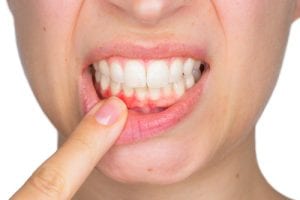
Treating Periodontal Disease
Many dentists and specialists agree that dental therapies that are less invasive and biocompatible can provide the best oral health care possible. A traditional gum surgery involves cutting open the gums to remove debris and decay as well as any deformities in the bone. This effective yet painful procedure has long been the standard of care to address periodontal disease until now. Dr. Chad Tomazin takes a biological approach to periodontal treatment with ozone periodontal therapy programs, which utilize activated oxygen to kill bacteria within inflamed gum pockets, eliminating infection and preventing decay.
Preventative Periodontal Treatment Options
Regularly visiting your dentist is important for the prevention of periodontal disease and other serious oral conditions. Untreated gum disease can increase the risk of cardiovascular damage, so addressing dental concerns before they become worse is a necessity. Dr. Chad Tomazin performs other preventative periodontal treatments, including:
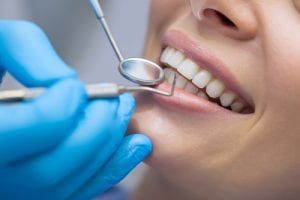
- Periodontal deep cleanings: Deep cleanings remove harmful deposits of calculus and plaque from the teeth, helping to prevent the development of gum disease.
- Enamel treatment: Fluoride-free xylitol tooth polish treatments help strengthen and protect tooth enamel, preventing tooth decay, halitosis, tooth sensitivity, and dry mouth.
To find out if you can benefit from periodontal treatment, or to schedule a dental appointment with Dr. Chad Tomazin, please call 951.686.3666.
Unfortunately, many individuals have one or more teeth removed at some point in their lifetime. Whether it be from a crack, fracture, decay, or root trauma, losing a tooth can be detrimental to a person’s self-confidence and the functionality of their teeth. Many dentists believe that dental implants are the best choice for replacing a missing tooth. A dental implant consists of a single titanium screw, which is made specifically for the bone to integrate into. The bone in the jaw “grows” into and around the titanium screw, providing an anchor for the false tooth (crown) to be placed. This advanced treatment is the only known procedure to stimulate bone growth surrounding the adjacent tissues effectively. Additionally, the implant itself provides the chewing system with stability and durability.

Am I a Candidate for Dental Implants?
To determine if you are a candidate for dental implants, you will need to schedule a consultation with a dentist who has plenty of experience performing the procedure. Dr. Chad Tomazin first checks the integrity of the bone structure where the implant is going to be placed. This can be done by examining the bite and alignment in addition to taking X-rays and photographs of the area. A dental impression is also made so that a customized crown can be created. In some instances, a computed tomography (CT) scan is necessary to confirm the level of the existing bone.
The Dental Implant Procedure
The dental implant procedure may be as simple as placing the implant or require a series of appointments when placing the implant. There are three vital steps to a dental implant procedure:
- Bone Graft: For a dental implant to be successful, there must be sufficient bone present to anchor the restoration. Usually, when a tooth is removed, over 50 percent of the bone is lost at the extraction site. In cases like this, additional bone must be placed before a dental implant procedure. If bone placement is required, antibiotics and anti-inflammatory medication should be prescribed to aid in recovery. It can take between three and six months for the new bone to graft, at which point X-rays are taken to ensure it is strong enough for dental implant placement.
- Implant Placement: The placement of the dental implant is crucial for a successful result. After the treatment area has been anesthetized, a small hole is drilled into the jaw bone. This hole is slowly widened to prevent the destruction of the jaw bone surrounding the implant site. The dental implant is then placed, and the surrounding gum tissue is secured over the implant along with a protective cover screw.
- Crown Placement: Before a permanent crown is attached to the implant, the bone must integrate with the titanium screw, which can take anywhere from three to six months. A temporary crown can be placed in cases where the implant placement is in the front of the mouth.
Recovery
After your dental implant procedure, you may experience some swelling and pain. However, most individuals who undergo the procedure report having minimal discomfort and swelling in the treated area. Over-the-counter medication and cold compresses can help alleviate these side effects. Prescription pain medication can also be prescribed, if necessary. During the week following your dental implant placement, it is best to consume a diet of soft foods and rinse the mouth after eating. Your dentist will likely schedule a series of follow-up appointments to evaluate the healing process.
Aftercare
When taken care of properly, a dental implant can last for more than 40 years! Proper at-home dental hygiene is critical to the success of the implant. The number one cause of dental implant failure is lack of flossing the area followed by lack of brushing the area. If plaque is not removed from the implant site, an infection can develop. Cleaning the dental implant as you would your natural teeth will ensure the best outcome.

If you have a heavy bite or habit of clenching or grinding, a night guard is necessary. Although titanium is a durable metal, an uneven load or heavy wear on the implant is not ideal. The bite guard is a clear wafer-like appliance that patients wear at night to ease the pressure on the natural teeth and dental implant. This device helps to ensure the longevity of your dental implant.
To find out if you are a candidate for dental implants, please contact the office of Dr. Chad Tomazin by calling 951.686.3666.
Do your teeth seem longer than they used to be? Have your teeth become more sensitive to cold drinks? These are a couple of common signs that are associated with a condition called gum recession. Gum recession tends to be more prevalent in older patients, but it can occur at any age due to oral hygiene habits, lifestyle choices, and other factors. When the gums recede, the gum pockets are more susceptible to collecting bacteria, resulting in a heightened risk of developing infections.

Because having uneven pressure in the chewing system is one of the leading causes of gum recession, it is crucial to go to a dentist that is qualified to study how the bite comes together to maintain optimal dental health. Dr. Chad Tomazin has a biological dental office and focuses on comprehensive oral health.
Causes of Gum Recession
- Periodontal (Gum) Disease: Although it is true that our risk of developing periodontal disease increases as we age, it is the bacteria in the mouth that cause gum infections. These bacteria grow and multiply between dental cleanings and live under the gum tissue where dental floss goes.
- Unhealthy Diet: Vitamin C, Vitamin B12, and essential fatty acids all play a critical role in gum health. Consuming a diet that contains plenty of fruits and vegetables will help to keep the tissue healthy. Conversely, eating unhealthy foods that contain excess amounts of sugar or starch can contribute to gum recession as well as other dental issues.
- Bite Imbalance, Clenching, and Grinding: Millions of patients suffer from continual gum recession that could be treated with proper bite balancing. When the bite is uneven, there is also uneven pressure on the teeth, causing tissue and bone destruction in those areas. Clenching and grinding also put excessive force on the teeth, damaging the surrounding bone and gum tissue.
- Chewing Tobacco: Patients who chew tobacco place the product against the gums, which suffocates the gum tissue in that area. Additionally, chewing tobacco increases the risk of oral cancer and other serious conditions.
- Oral Piercings: Wearing lip and tongue piercings can cause trauma to adjacent tissue inside the mouth and cause the gums to recede.
- Sodium Lauryl Sulfate Intolerance: Individuals who are sensitive to this toothpaste additive can experience gum recession due to irritation.
How to Prevent Gum Recession
It is essential to visit the dental hygienist on a regular basis, as they are the dental professionals who assess the health of the gums, take measurements of the gum tissue, and recommend specific dental cleanings and products to help prevent gum recession. The body cannot regrow gum tissue. Therefore, it is best to use preventative measures to preserve your gum health. Here are some tips on how to prevent receding gums:
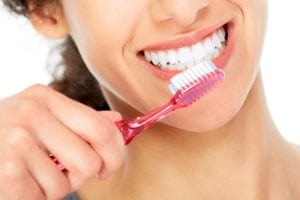
- Use a soft-bristled toothbrush to avoid “brushing away” the gums.
- Floss between all of your teeth at least once a day.
- Maintain a regular oral hygiene schedule with your dental hygienist to minimize the amount of bacteria in your gums and teeth.
- Have your bite thoroughly evaluated by your dentist.
- Prevent destruction of gum tissue by correcting the bite with orthodontics.
- Wearing a night guard while you sleep reduces the amount of stress on the jaw joint and teeth.
- Consume a balanced diet rich with Vitamin C, Vitamin D, and B vitamins.
- Take time to decompress and relax the body. Stress plays a significant role in breaking down the immune system, which starves gum tissue of the nutrients and oxygen it needs.
Gum Recession Treatment Options
To treat gum recession and help improve the overall health of your teeth, your dentist will likely take these steps:
- Bacterial Infection Treatment: Removing the plaque and tartar along with killing the bacteria present surrounding the gum tissue is ideal. Dr. Tomazin offers advanced ozone periodontal therapy programs that disinfect the gum tissue. Periodontal deep cleanings can also help prevent further infection by removing plaque, tartar, and biofilm on the surface of the teeth.
- At-Home Dental Hygiene Recommendations: Investing in an electric toothbrush and dental irrigator will help remove plaque and debris. These will also disrupt the bacterial colonies surrounding the teeth and gum tissue. Flossing also helps to disrupt bacteria and remove plaque.
- Bite Analysis: Visible wear on the teeth, such as flattening of the teeth or notches on the sides of the teeth, are indications that the bite is imbalanced. A professional bite study can prevent further destruction of the teeth and gums.
- Orthodontics: This type of dental therapy can correct a poor bite. Experienced orthodontists are capable of moving adult teeth slowly enough to avoid damaging the bone and gum tissue.
- Tissue Repositioning: This is a surgical procedure that is performed by a periodontist (gum specialist) to preserve the health of the tooth. When the root is exposed, it is more susceptible to tooth decay and sensitivity. Tissue repositioning involves lifting the gum tissue and repositioning it to cover the exposed root surface. Sutures are placed to secure the tissue, and the area usually takes between two and four weeks to heal.
- Tissue Grafting: A periodontist also performs this procedure. When there is insufficient gum tissue, a tissue graft is placed on the receded area. A collagen graft or tissue from the roof of the mouth can be used during treatment. Again, sutures are used, and the grafted area typically heals in two to four weeks.
If you suspect your gums have receded, please contact the office of Dr. Chad Tomazin by calling 951.686.3666.









